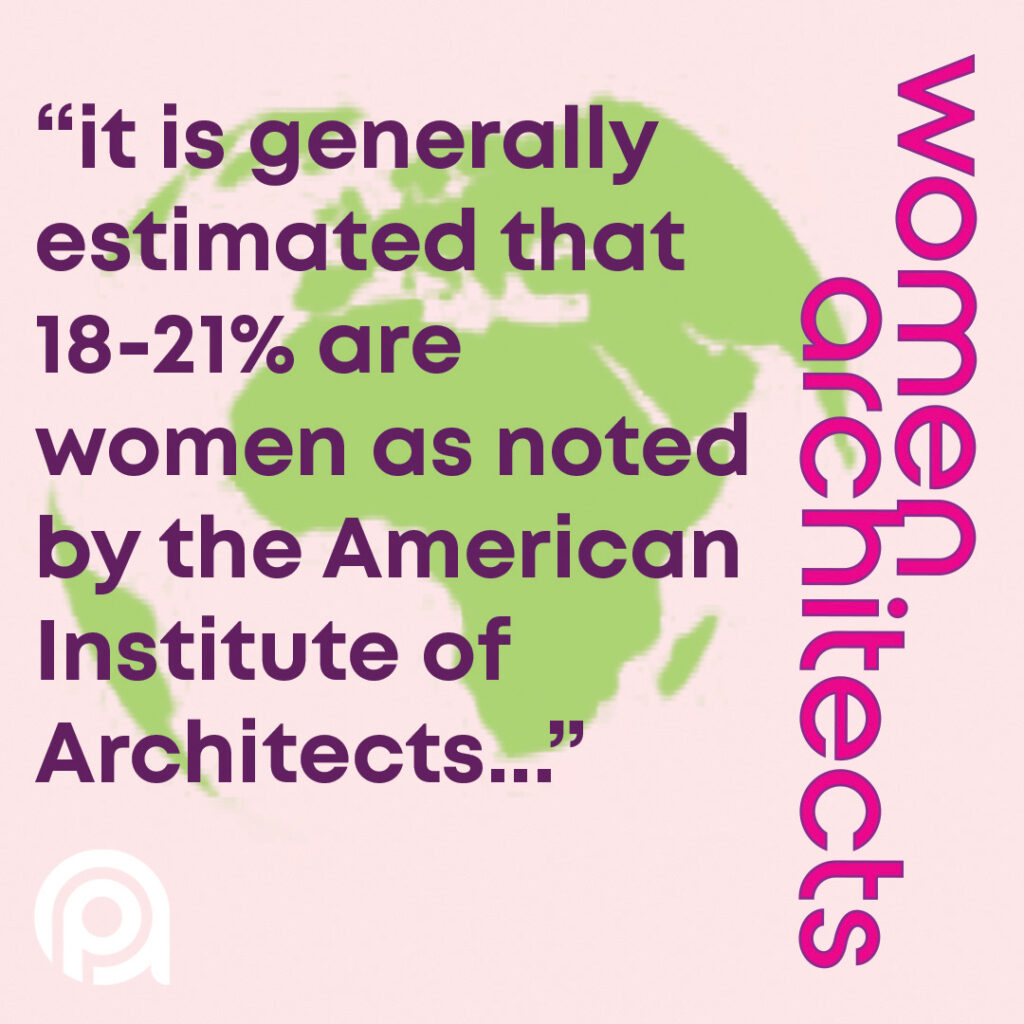
US women and non-women
Architectural education in the US started about 1865. Resistance to formally allowing women to study architecture continued until 1915 when Henry Frost started the Cambridge School of Architecture and Landscape Architecture in his Massachusetts’s office which he ran for 27 years that was then taken over by Harvard Graduate School of Design. When I attended architecture school from 1967 to 1972 at the University of California at Berkeley, women and non-women were educated in the same schools with the same requirements for graduation, although the uneven negative ways the educational culture continues to impact students differently (even today) because of gender, class, race, immigration status, disability or other reasons continues and is being addressed by students in many schools.
Each state holds the authority to license the use of the title Architect. The principal way to become a licensed architect is to graduate from an accredited architectural program, then follow the requirements by the state of California (or other states) for experience requirements and rigorous testing before one may use the title Architect.
Example of Licensure Requirements in California:
1. Provide verification of the National Architectural Accrediting Board (NAAB) or accredited education equivalents.
2. Successful completion of the Architect Registration Examination (ARE)
3. Completion of the Architectural Experience Program (AXP)
4. Successful completion of the California Supplemental Examination (CSE)
Once you have paid the fees and met all the steps which may take several years, depending on your situation, you will be given an architectural license number by the state and you may use the title Architect , without this process you are open to fines and considered unlawful by the state. Each state is responsible for reporting their annual results from testing to the national level. States may add requirements beyond the national requirements. Reciprocity between states is possible. See the National Council of Architectural Registration Boards website (ncarb.org) for details for licensure. Graduates of architectural programs may call themselves “an architectural program graduate,” but they usually like to use the term designer if they have not obtained a license.
According to the National Council of Architectural Registration Boards (NCARB) December 2020 statistics there were 121,997 registered architects in the US. It is generally estimated that 18 to 21% are women by the American Institute of Architects (AIA), the dominant US professional organization for architects. Recent American statistics estimate that 2 to 3 times the number of licensed women architects have architectural educations without getting licensed and find work contributing to the building sector in different ways or working on environmental issues and/or following an academic path if they don’t do something completely different like teaching art, or becoming a contractor, an urban or rural planner or a journalist. Non-women in architecture also may skip the licensing process, but currently not at such a high percentage.
My Experiences
In 1973 I was looking for a job and I was active in forming the Organization of Women Architects. At that time, less than 3% of licensed architects were women out of 33,000 in the US.
The increase in the number of women in architecture has been tremendous, but it hasn’t been without great social friction from the cultural context of capitalism, patriarchy and sexism, and an elite conservative professional history designed by men for men during the colonial periods of the late 1800s. This profession evolved out of the building trades who actually built, set standards, and took pride in their work, they too were mostly men and shunned the participation of women. The arrival of women who wanted to be fully skilled and valued thinkers, designers, historians, and critics has taken a century of women’s determination to find ways to practice their love of architecture within the tradition of the profession or outside of it.
For a summary of the history of women in architecture, you might consider “The Incredible True Adventures of the Architectress in America” by Architectural Historian Gabrielle Esperdy.
Today, there is a push by many to challenge the licensing process. Here are just a few: “The 10 Great Reasons NOT TO Get Your Architecture License” from one thoughtful young architect website by Michael Riscica. There are also forces on organizational levels, for example within the architecture-lobby.org. Or you might read the book Architects Beyond Architecture, or the articles “An architect who only designs buildings is like a doctor who only prescribes paracetamol” says ProxyAddress founder and Getting over Architecture by Tony Fry, rethinking and redirecting architecture to deal with climate impacts on a large scale of moving cities away from sea level rise, lack of water, mine sinks, people moving, by considering physical, cultural, and community involvement for sustainment at large scales. Very needed and exciting
